#every film Troy has an identity crisis
Text
You know...you can technically sum up the three HSM films as Troy repeatedly doing things that upsets Chad.
#random thoughts#HSM#running theme#every film Troy has an identity crisis#Every film Chad is like: Bro I don't even know you anymore!#And like yeah you wouldn't#he's having an identity crisis#again#it's always because of a girl though so I don't know how much of it is a genuine identity crisis#and how much is him just reacting badly to people reacting badly to his choices#Troy doesn't want to think about his future Troy wants to be Gabriella's househusband#Troy Bolton#Chad Danforth#Chad is just constantly shaking his head at his bro#I'm still salty that Troy chose his university based on where his girlfriend was going#there was that scene in HSM3 where Chad was so excited that things were going to go back to the status quo at college too
3 notes
·
View notes
Text
Top Ten Favorite Portrayls of Batman
So a while back I did a top ten Superman list and I had a lot of fun making it. However, seeing all this talk about Batman and the new movie coming out, it got me thinking about Batman a lot. Seeing as how Batman is my second favorite superhero behind Superman, I thought, why not do one for him too? So here is my top ten favorite portrayls of the dark knight himself, Batman.
10. Val Kilmer
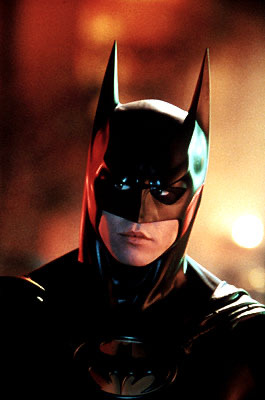
Now some people might call bs on this, and I can understand why. Batman Forever was not that good and had tons of problems, but I gotta say, I actually liked Kilmer’s portrayal of Batman. He gave all he could and honestly didn’t do too bad, plus he was the first one I ever saw to get an actual fight scene as Bruce Wayne too. And let’s be honest, it definitely could have been worse (looking at you Clooney). While not that great, it wasn’t that bad either.
9. Diedrich Bader
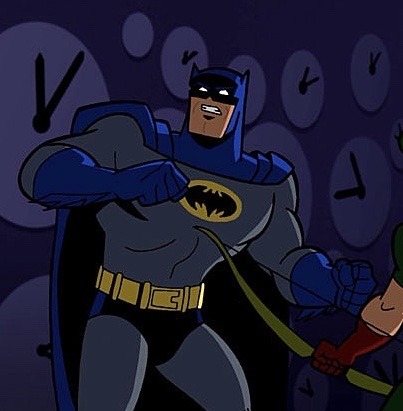
While I haven’t seen too much of Brave and the Bold, what I have seen entertained the absolute hell out of me. Diedrich Bader is also freaking hilarious as Batman. I love how he plays it so straight with the cartoony and over the top backdrop of this show. Though given how he did in the Joe Chill episode, we know he can do serious Batman as well. Either way, it’s a very fun and entertaining performance.
8. Bruce Greenwood
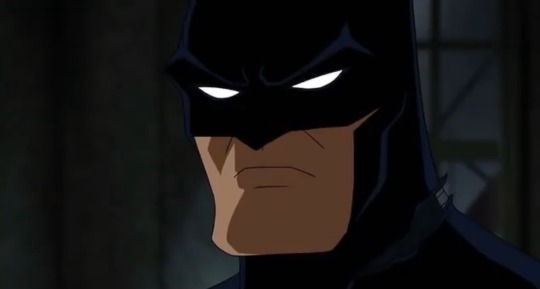
While he was very good in Young Justice and Gotham by Gaslight, let’s be honest, we all love his performance in Under the Red Hood the most. His chemistry with Jensen Ackles was amazing and they both turned in amazing performances with the cat and mouse game that Batman and Red Hood play against each other. It’s one of the most tragic stories ever made for Batman, and Bruce pulled it off flawlessly.
7. Will Friedle

Ok this might be cheating a bit considering this isn’t Bruce Wayne, but it’s my list and I’ll do whatever I want. With that being said, yes, Will Friedle was fantastic as Terry McGinnis. The idea of a teenager becoming Batman can be hoaky, but Batman Beyond was anything but. It was fun, intense, stylistic, and gave us a very worthy successor to the cowl. While Terry was a teenager, he took his job of being Batman very seriously. He was always fun to watch and still is.
6. Troy Baker
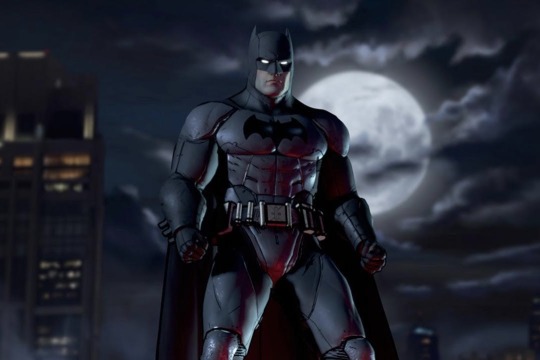
For me, one thing sets Troy Baker apart from most Batmans. He plays more of Batman being the persona, and Bruce Wayne being his real identity. For most, that would probably be a terrible idea. But honestly, Troy made it work. Batman the Telltale Series is one of my favorite Telltale games, and he’s the main reason. His portrayal of Bruce Wayne was complex and dark, but also more sympathetic and human than most other portrayls I’ve seen. It was a risky move, but an interesting one.
5. Adam West

Ok, I’m just gonna be honest, this one is mostly a biased choice. Let’s be honest, compared to the others on the list, this portrayl would probably be considered the worst. But I can’t help it, I love this version of Batman. Batman was just such a fun freaking show. It was campy, it was silly, it was entertaining, and I just find it so appealing. Yea he’s not dark and gritty, yea he’s campy as hell, but I love absolutely every last bit of it.
4. Christian Bale
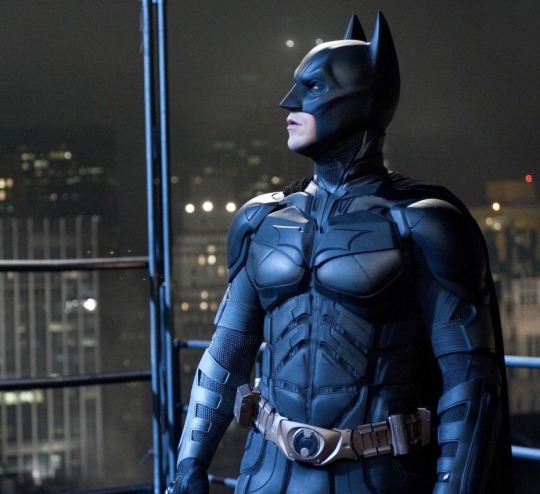
How can you not love the man who brought the dark knight back to the big screen? The Dark Knight trilogy is one of the most epic film series in all of cinema, and it’s earned that recognition. Bale’s take on Batman was definitely a unique one, putting him in a more realistic setting instead of a comic book one. And it was also quite interesting as we got to properly see Bruce’s origins and how he actually became Batman. It’s wan epic performance with many layers and fascinating character development.
3. Michael Keaton

I’m just gonna say, out of all the solo Batman films, Batman is my absolute favorite. Heck, it’s just one of my favorite comic book movies, period. It’s rich with dark and gothic atmosphere and amazing story telling and characters. At the center of it, is an absolutely amazing take on Batman. This may be the most mysterious and introverted take on Batman I have ever seen. It’s funny contrast to Bale as this time we know almost nothing about how he became Batman, other than his parents death. All we know is that he is brutal, terrifying, and can take you out with one punch. Beetlejuice ain’t got nothing on Batman.
2. Ben Affleck
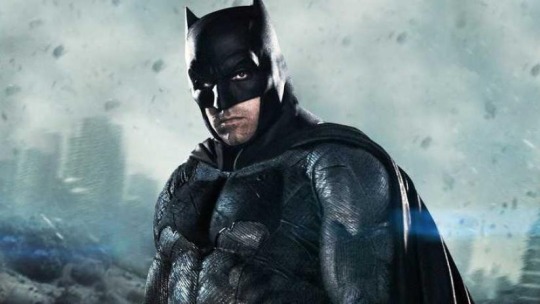
I don’t care if you hated him, I don’t care if you hate the DCEU, Ben Affleck was absolutely amazing as Batman. He was the first Batman to actually make me jump in fear in the theatre. He was the perfect live action adaptation of Frank Miller’s Batman (come on, we all know that’s exactly what they were going for). He is the bitter and broken old man Batman that has lost all his morals and his hope in saving Gotham. His journey and character development throughout Batman v Superman was one of the most amazing I’ve ever seen, and Ben nailed it. It not only made me eat my words when I doubted if Ben could pull it off, but it made me respect Ben so much more as an actor than I ever had. He’s the Batman I’ve always wanted to see on the big screen, and no other live action version can top him.
1. Kevin Conroy
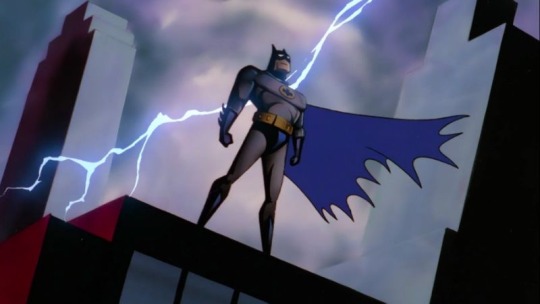
Like I said, no other live action adaptation can top Affleck, I said nothing about animated. I mean my god, how can this man not top everyon’s list? No matter what medium he plays the role on, Batman the Animated Series, Justice League, Batman Beyond, the Arkham games, the animated movies, Kevin Conroy’s voice will always be the definitive voice of Batman. His deep baritone voice combined with his intimidating presence and excellent delivery just makes Batman sound like a man you don’t want to mess with. When you read any comic, he’s the one you hear, when you just think of the character, he tends to be the one you hear. He’s been voicing the role for over twenty years, and when he plays the character in live action for the first time this year in Crisis on Infinite Earths, he will have literally concqoured all possible mediums you could play him as. Kevin Conroy truly is the perfect dark knight. He is vengeance, he is the night, he is BATMAN!!!!!
9 notes
·
View notes
Text
Star Trek: Discovery Season 3 Episode 8 Easter Eggs & References
https://ift.tt/3myttjI
This Star Trek: Discovery article contains spoilers for “The Sanctuary.”
After the hugely nostalgic trip to Ni’Var in “Unification III,” you’d think that Discovery might be briefly done with a ton of callbacks to previous eras of Trek. With Episode 8, “Sanctuary,” that guess is partially correct. When Burnham and Book hit-up Book’s home planet of Kwejian, the vast majority of what happens on that planet doesn’t have roots in old Trek canon, because, Kwejian — at least for Burnham — is a strange new world. That said, the rest of the episode still has more than a handful of references to the Final Frontier that came before. Here’s every Easter egg and reference we caught in Star Trek: Discovery Season 3, Episode 8, “Sanctuary.”
Prime Directive Violations
Admiral Vance tells Burnham and Sura that “The Chain has turned Prime Directive violations into an art form.” What he means is that basically, the Emerald Chain is contacting pre-warp planets, and exploiting those inhabitants for whatever they can get. In some ways, this makes the Emerald Chain kind of like the Terran Empire of the Mirror Universe. It also echoes the fight between the Kelpiens and the Ba’ul in Discovery Season 2.
A Picard-era Starfleet Badge?
When Oysraa (Janet Kidder) is revealed at the top of the episode, we see her holding an old Starfleet badge on the planet Hunhau, last seen in the episode “Scavengers.” In that episode, we saw Michael sifting through other old badges. It’s unclear which era this Starfleet badge comes from but it seems to be a version of the styles worn in Star Trek: Picard.
Janet Kidder as Osyraa
Does Janet Kidder seem familiar to you? Well, it’s not an Easter egg to notice an actress that seems familiar, but for genre fans, Janet Kidder had recurring roles in both The Man in the High Castle and the time-travel series Continuum. She also bears a striking resemblance to Lois Lane actress Margot Kidder, and that’s because Janet Kidder is Margot’s niece.
Jonathan Frakes is about to tie his TNG directorial record
This is the second episode this season to be directed by Jonathan Frakes, the previous one being “People of Earth.” Frakes is slated to direct one more episode this season, Episode 12, “The Good of the People.” That makes six episodes of Discovery directed by Frakes since 2017. If you count the two episodes he directed of Star Trek: Picard, this means Frakes has now directed the same number of episodes of “New Trek” as he directed episodes of The Next Generation. To be clear, he also directed two feature films (First Contact and Insurrection) and three episodes each of Deep Space Nine and Voyager. Still, assuming Frakes directs episodes of Discovery Season 4, Picard Season 2, and Strange New Worlds, we’re probably like a year away from him starting to overtake his ‘90s-era Trek directorial record!
Brandon Schultz and Kenneth Lin
The writers of this episode are Kenneth Lin and Brandon Schultz. This appears to be Kenneth Lin’s first Discovery episode. But, fans should already be aware of Brandom Schulz. Last year, he wrote the gorgeous Short Treks episode, “The Girl Who Made the Stars.”
“Hit It”
Saru is working on his catchphrase to give orders in a cool way and having a rough time. Having Captain Pike say “Hit it” was first introduced in Discovery Season 2’s debut episode, “Brother.” But, it should be noted that Pike said “Engage!” in the TOS pilot “The Cage.” Captain Freeman faced a similar debacle in Lower Decks earlier this year.
Verubin Nebula
Stamets and Adira have tracked the origin of the Burn to the “Verubin Nebula.” This appears to be a new Nebula in the Trek canon, but it sure sounds like an old one, doesn’t it?
Federation Distress Signal
When Saru asks Adira to isolate aspects of the music in the nebula, they find a Federation distress signal. This sound-effect sounds a little bit like a computer alert from TNG-era. (You can listen to a sample here.) But, the way in which they decipher the sound information is a little bit like the way Uhura and Spock break-down the alien probe signal in Star Trek IV: The Voyage Home.
What lost ship is in there? Who knows!
Boatswain’s whistle
Speaking of audio Easter eggs, when Saru enters the bridge early in the episode we hear the three-note Boatswain’s whistle. This has origins in actual naval history, but for Trek fans, this sound effect is most famously associated with The Original Series.
The Viridian/viridian
Osyraa’s warship is called “The Viridian” This could be a reference to the Star Trek Generation planet Veridian III, the place where Captain Kirk was eventually killed. That said the word “viridian” mostly refers to a certain shade of green, and the Orions are well, you know kind of…viridian in color.
Adira’s identity crisis echoes Ezri Dax
Adira tells Stamets they’re having a hard time figuring out which host’s personality is the most dominant. This echoes exactly what Ezri Dax went through in Deep Space Nine Season 7, when, like Adira, she was given a Trill symbiont on short notice.
Georgiou’s “flashback” is back
Much like we saw in “Scavengers,” Georgiou experiences her Mirror Universe flashback again. However, it should be noted that it sounds like she’s not saying “son,” like we previously thought, but instead saying “San.” This references a character mentioned in passing in a Discovery tie-in novel called Die Standing. Relevantly, this book also has Georgiou crossing paths with a previous host of Dax; Emony.
Orion slavery
As Osyraa mocks Saru and the history of Kelpien enslavement, he counters by saying, “If memory serves, the Orions were once enslaved themselves.” Using the phrase “If memory serves,” is a sideways reference to Spock, but it also references the Discovery episode of the same name from Season 2. But, is Saru right? Well, yes, from a certain point of view. In the TOS-era, it was generally assumed that the Orions dealt in “animal women” as slaves. This is where we get the famous “green Orion” dancing woman, in “The Cage.” However, the Enterprise episode “Bound,” inverted this assumption, and revealed that Orion women were using an illusion of slavery to actually control the Orion Crime Syndicate. So, although Saru was right, he was also wrong. When Oysraa says: “My ancestors knew that power is virtue and that there is no nobility in suffering,” she’s likely referring to the faux-appearance that women were enslaved, when in fact, they were the ones running the entire Orion “government.”
Photon torpedoes
Book mentions that Oysraa is using “photon torpedoes” to bombard the surface of Kwejian. Does this seem to imply the Emerald Chain has old-school tech? Shouldn’t photon torpedoes be outdated?
Read more
TV
The Best Star Trek Holiday Gifts
By Ryan Britt
TV
How Star Trek: Discovery Fulfills Spock’s Franchise Legacy
By Ryan Britt
Detmer manual control references…Riker?
When Detmer decides to go “full-manual control” of Book’s ship, she suddenly has a couple of nifty joysticks. This seems to be a reference to the “manual steering column” on the Enterprise from Star Trek: Insurrection. In that film, Riker flew the Enterprise much the same way Detmer flies Book’s ship here. Guess who directed both that movie and this episode? Yep, you already know; Jonathan Frakes!
“You both are empaths”
Turns out, Book and his species aren’t space wizards, but instead, as Burnham says, they are empaths. This is a wink to the TOS episode “The Empath” but also, to the most famous empath in Trek history, Deanna Troi. Burnham also mentions that the Discovery will “amplify” the empathic signals of Book and Kyheem, “just like we did on Kaminar.” This references the Discovery Season 2 episode “The Sound of Thunder.”
The Emerald Chain is running out of dilithium
Thanks to Ryn (Noah Averbach-Katz), the big revelation at the end of the episode is a pretty big game-changer. The evil Emerald Chain is low on dilithium, which means it will be harder for them to move their ships around. Because Discovery isn’t really relying on dilithium anymore, this could change everything in the rest of the season.
Ever since The Original Series, starships have needed dilithium to warp around the cosmos. If that changes by the end of Discovery Season 3, then the method for all this Star Trek-ing will be suddenly strange, new, and bold. Who knew Star Trek would end-up focused on the way we Trek?
cnx.cmd.push(function() { cnx({ playerId: "106e33c0-3911-473c-b599-b1426db57530", }).render("0270c398a82f44f49c23c16122516796"); });
Star Trek: Discovery Season 3 is streaming on CBS All Access.
The post Star Trek: Discovery Season 3 Episode 8 Easter Eggs & References appeared first on Den of Geek.
from Den of Geek https://ift.tt/39CyOmv
1 note
·
View note
Text
The 20 Greatest DC Comics By Geoff Johns
For well over a decade now, Geoff Johns has been one of the most important creative voices at DC Comics, not just in the world of comics, but in television and film. This was made evident last year when he was named the President of DC Entertainment (as well as retaining his previous title of Chief Creative Officer). Of course, that doesn’t mean he has stopped writing, as Johns also recently hinted that he might be writing a “Watchmen”-related comic book in the future.
RELATED: DC Comics: The 15 Biggest Moments of 2016
With the news of Johns returning to comics creation in the near future, we thought we’d spotlight the greatest DC Comics stories that he has done over the years. We were going to do 15, but there are just too many good ones! NOTE: With so many to choose from, we decided to eliminate “52,” since he co-wrote it with three other guys (Grant Morrison, Mark Waid and Greg Rucka), so we thought it best to spotlight only comics Johns wrote by himself (or with a single co-writer).
A KID’S GAME
In 2003, Geoff Johns rebooted “Teen Titans” with artists Mike McKone and Marlo Alquiza. The set-up was an attempt to embrace the history of the “New Teen Titans” while staying true to the general idea behind the Teen Titans, which is that it is a team made up of the main teen heroes in the DC Universe. That had not been the case in well over a decade before Johns relaunched the team with Robin, Superboy, Wonder Girl and Kid Flash (Impulse is revamped as Kid Flash in this series). Classic Wolfman/Perez Titans Cyborg, Starfire and Beast Boy are along as mentors to the younger generation.
They first face off against Deathstroke, who does not want to see the Titans reform. As it turns out, Deathstroke was being possessed by his son, former Titan Jericho, so it was Jericho who did not want to see any more teenagers get killed (a recurring theme throughout this arc is everyone still trying to come to terms with the then-recent death of Donna Troy). Superboy gets a new secret identity as Conner Kent in this story, which worked particularly well with fans.
FOREVER EVIL
The first major companywide crossover following the New 52 reboot of the DC Universe, “Forever Evil” saw the Crime Syndicate from Earth-3 arrive on Earth and quickly conquer the planet by more or less eliminating the Justice League (save for Batman). Geoff Johns and artists David finch and Richard Friend then showed that the Crime Syndicate planned to offer a deal to the supervillains of Earth to work with them.
It therefore falls to the villains to win their planet back, and Lex Luthor, Catwoman, Black Adam, Sinestro and Captain Cold play the biggest role in doing just that, working alongside Batman to overcome the occupying force of the Crime Syndicate. Along the way, Nightwing is unmasked to the world and almost killed, changing his status quo dramatically. Eventually, the rest of the heroes fight their way back against the Crime Syndicate and team-up with the villains to save the day. A few of the villains — most notably Lex Luthor — remained as members of the Justice League following the event!
KIDS
“Kids,” from “JSA” #29 by Geoff Johns and Peter Snejbjerg, is sort of Johns’ answer to John Byrne, Chris Claremont and Terry Austin’s classic “Uncanny X-Men” #143, where Kitty Pryde was left alone on Christmas and had to fight a powerful demon. Here, the two teenage members of the Justice Society, Star Spangled Kid and Jakeem Thunder, are left alone on Halloween while the rest of the team goes out to find their missing fellow members.
This was a crossover with the “Last Laugh” event, where Joker used a variation of his Joker Venom on all of the villains of the DC Universe, making them all Joker-esque bad guys. Star Spangled Kid and Jakeem have to take on a Joker-ized Solomon Grundy, while knowing that Grundy killed the previous Star Spangled Kid (back in the Infinity Inc. days). Johns does a wonderful job with the character work between Star Spangled Kid and Jakeem.
VIRTUE AND VICE
This graphic novel by Geoff Johns, Carlos Pacheco and Jesus Merino continued the classic tradition of the Justice League and the Justice Society teaming up every year, only done in a brand-new way, as the Justice League and the Justice Society were now both on the same planet (and the Justice Society had just recently received their own ongoing series). They met up in this issue to spend Thanksgiving together.
Things go poorly when the Seven Deadly Sins end up possessing seven members of the teams — Batman, Shazam, Plastic Man, Green Lantern, Mr. Terrific, Doctor Fate and Power Girl. The Justice League and the Justice Society now have to hunt down and stop their own friends by finding a way of getting the sin out of each of them (you try to get Batman to stop feeling anger!). This was a dynamic and widescreen updating of a classic comics tradition.
THE TRENCH
For many comic book fans, there was never any need for anyone to “make” Aquaman cool, as he was always cool. Still, it’s safe to say that there are still many people out there who, due to Aquaman’s broad exposure on “Super Friends,” know him more than they know most other superheroes… even if it is mostly as a joke. It’s sad that was still a stigma attached to the character nearly 40 years after “Super Friends” debuted, but that was what Geoff Johns was working with when he rebooted Aquaman following the New 52.
The character was now given an ongoing series with top artistic talent in Ivan Reis and Joe Prado, and Johns addressed the elephant in the room right away, by having the public treat Aquaman as a bit of a joke. Of course, Johns made sure to portray him as a total badass. He even tied in the whole “talks to fish” stuff, which remains oddly contentious. Johns handled the (pardon the pun) “fish out of water” aspect of Aquaman and Mera extremely well and the evil Trench were great villains.
THE RETURN OF HAWKMAN
It was with this 2001 story from “JSA” #22-25 that Geoff Johns first began to get a name for himself in comic fandom as the guy you would go to if you wanted a property “fixed.” In this storyline (drawn by Stephen Sadowski and Michael Bair), the Justice Society reunited with their old friend, Hawkman, as Johns and co-writer David Goyer came up with a way to simplify the overly-complicated backstory of Hawkman, which was so bad that at the end of his last series, he was literally thrown into Limbo just to get rid of him.
Their take was that Hawkman and Hawkwoman are lovers from ancient Egypt who are tied to each other through reincarnation. So they have been together in many different incarnations over the centuries. Johns would later take this clever hook and launch a “Hawkman” ongoing series based on it that he co-wrote with James Robinson.
BLITZ
Hunter Zolomon was an acclaimed criminal profiler who had suffered a great deal of tragedy in his life, with a mother who was killed by his serial killer father. He ended up in Central City where he became a police profiler. He became good friends with Wally West, the Flash, but in a fight with Gorilla Grodd, was paralyzed. He asked Wally to go back in time and change things to help him avoid being paralyzed. Wally explained that he couldn’t do that, so Hunter tried to use the cosmic treadmill himself and it exploded, making him “out of sync” with time. It would look like he was running fast, but really he was doing a series of small feats of time travel.
Zoloman then determined that Wally wasn’t a good enough hero because he didn’t have enough tragedy in his life to spur him on, so he devoted himself to “helping” Wally by becoming the villainous Zoom and murdering Wally’s wife, Linda Park. This was the final story arc of the acclaimed “Flash” creative team of Geoff Johns and Scott Kolins, as Kolins left the title with the final issue of this arc, “Flash” #200.
FINAL CRISIS: LEGION OF 3 WORLDS
Over the years, the Legion of Super-Heroes had become extremely complicated. The original Legion, who we saw grow old over the decades, had been seemingly wiped out of continuity due to their close ties to the “Superboy” mythos. DC then introduced a new blank slate Legion following “Zero Hour.” Years later, Mark Waid and Barry Kitson were allowed to create a third brand-new blank slate Legion of Super-Heroes. During a Justice League/Justice Society crossover in Brad Meltzer’s “Justice League of America” and Johns’ “Justice Society of America,” they had brought back the original Legion (the ones who had aged). In this mini-series (that was ostensibly tied in to the “Final Crisis” crossover series), Superboy Prime (from Johns’ “Infinite Crisis” series) traveled to the future, where he took on the Legion.
We then learned that the other Legions of Super-Heroes were each the Legion of different Earths! They all teamed-up together (along with a time-traveling Superman) to take on Superboy Prime. During the event (which was drawn by George Perez and Scott Koblish), both Superboy and Kid Flash were brought back to life!
GREEN LANTERN: REBIRTH
One of Geoff Johns’ first major events that he wrote for DC was early in his career at DC. It was the crossover “Day of Judgement,” dealing with the effects of a Spectre running loose on the DC Universe without a host (as its original host, James Corrigan, had been allowed to go to Heaven). Hal Jordan, who had died in an earlier crossover, took over as the Spectre.
A few years later, Johns was given the chance to bring Hal Jordan back as a Green Lantern. In this mini-series (drawn by Ethan Van Sciver and Prentiss Rollins), Johns revealed that Hal Jordan had never become evil in the first place, but had been possessed by a fear entity known as Parallax (the name Hal used as a villain). During this series, the Green Lantern Corps was reborn along with Hal, as well as former Green Lanterns John Stewart, Guy Gardner and Kilowog, who joined up with then-current Green Lantern, Kyle Rayner to restart the Corps. Also returned to life was Sinestro, who Johns would have big plans for in the relaunched “Greeen Lantern” Series that followed this miniseries.
BATMAN: EARTH ONE
The “Earth One” series of graphic novels were sort of like the Ultimate Universe for Marvel Comics, only they went a step further than that. The Ultimate Universe was essentially about doing the same basic superheroes, but without years of continuity dragging them down (they quickly moved on from that, but that was the basic original approach). The “Earth One” graphic novels, though, gave their creators a good deal more freedom. They could do pretty much any take on the basic idea of Superman or Batman that they chose.
In his “Batman: Earth One” graphic novel, Geoff Johns (working with artists Gary Frank and Jonathan Sibal) completely re-imagined the Bruce Wayne/Alfred Pennyworth dynamic, as now even after Bruce had become a vigilante, it was Alfred who did much of the dirty work. Bruce did not just automatically become “the” Batman when he started dressing as a bat to investigate his parents’ murder at the hands of crooked Gotham City mayor, Oswald Cobblepot. By the end of the first book, though, the proverbial switch had been turned in Bruce Wayne going forward.
INFINITE CRISIS
DC spent a lot of time leading up to “Infinite Crisis,” with a powerful one-shot (co-written by Johns) that ended up with the death of Blue Beetle at the hands of Maxwell Lord. That then led into a series of miniseries that finally culminated with “Infinite Crisis” by Geoff Johns, Phil Jimenez and Andy Lanning. The basic idea is that there were a group of survivors at the end of “Crisis on Infinite Earths.” They were the Earth-1 Superman, the Earth-1 Lois Lane, Superboy Prime and Alexander Luthor. While they started in a little pocket universe, they saw the DC Universe continue and grew very critical of what had happened. Over time, Luthor and Superboy Prime went crazy, feeling that their sacrifice had been wasted by these grim and gritty heroes.
So, they vowed to restart things, even if it meant destroying these universes along the way. Superman was tricked into going along with them. Ultimately, the heroes of the DC Universe managed to stop Luthor’s mad plans, but in the process, they also revealed the existence once more of alternate Earths! The Multiverse was soon on its way!
SECRET ORIGIN
“Secret Origin,” which ran in “Green Lantern” #29-35, was the first big follow-up to the epic “Sinestro Corps War,” and it helped to serve two notable purposes. First, it streamlined Hal Jordan’s origin. Secondly, it set up future events that would lead to “Blackest Night.” Geoff Johns and artists Ivan Reis and Oclair Albert re-told the classic tale of Abin Sur crash-landing on Earth and giving his ring to a young Hal Jordan; but this time, the young Hal Jordan is attacked by the future Red Lantern, Atrocitus.
We also see how Hal’s origins coincided with Hector Hammond being transformed into a telepathic villain, as well as William Hand’s new, twisted origin and path to the Black Hand he would become. Carol Ferris also got some strong development in this new origin. It was basically this stream-lined and engaging origin (complete with the fascinating pairing between Hal and his training officer, Sinestro) that was used as the basis for the “Green Lantern” film in 2011, dubious though that film is remembered as being today.
NEW KID IN TOWN
Geoff Johns’ first ongoing series for DC Comics was the delightfully charming “Stars and S.T.R.I.P.E.,” with artists Lee Moder and Dan Davis. The idea behind the series is that a teenage girl, Courtney Whitmore, has grown up with a single mother most of her life. Her mother, though, fell in love with a stodgy middle age man who decided to move them to the middle of smalltown U.S.A. in Blue Valley, the city best known for being where Wally West lived as a child.
Courtney discovered that her stepfather Pat was actually a superhero, the former sidekick to the Star Spangled Kid. He still had the Star Spangled Kid’s power equipment, which Courtney stole to became the new Star Spangled Kid. Pat had been working on a suit of armor and went into action as S.T.R.I.P.E. He wanted Courtney to stop being a superhero, but the problem was that Pat was keeping his identity a secret from his new wife, so if he told on Courtney, she would tell on him. Thus, they formed an uneasy new superhero alliance. Johns really nailed the personality of young Courtney, who was a good kid put in a difficult position, who was striking out at her step-father, despite knowing that he really was a good guy. The whole series was a blast, but if we had to pick one story, we’d go with the initial arc in “Stars and S.T.R.I.P.E.” #1-3, where they first form their team.
JUSTICE LEAGUE ORIGIN
When the DC Universe was rebooted with the New 52, Geoff Johns actually launched the whole endeavor with the first all-new number one, which was, of course, “Justice League” #1, a title he helmed alongside superstar artists Jim Lee and Scott Williams. This first story arc, “Origin,” was set at the start of the rebooted Justice League’s tenure, when seven heroes had to join together to take on the invading forces of Darkseid.
The most striking aspect of this initial story, besides how Cyborg was now a founding member of the Justice League, was how well Johns used humor to humanize the heroes. These were new heroes just getting to know each other, so of course there was going to be plenty of ill-at-ease humor between them (especially between Flash and Green Lantern, who had been teaming up with each other before the other heroes met). When the chips were down, though, they came together and were true heroes during a huge, world-threatening crisis.
BLACKEST NIGHT
“Blackest Night” served two major purposes. On the one hand, it was the culmination of a series of “Green Lantern” storylines that had introduced Yellow Lanterns, Red Lanterns, Blue Lanterns, Violet Lanterns and Indigo Lanterns. This event, as is subtly implied in its title, introduced Black Lanterns and, ultimately, White Lanterns. On the other hand, it also served as a meditation on the very nature of superhero “death.” Superheroes had been dying and coming back for years at this point and now, in this series, there was a sort of explanation for how this went on, and a backlash against it.
The conflict revolved around Black Lantern Rings suddenly reanimating the corpses of every dead superhero and supervillain in the DC Universe, corrupting them and sending them against the living heroes as an army of (effectively) zombies. By the end of the series, Geoff Johns and artists Ivan Reis and Oclair Albert had reconfigured the very notion of “death” in the DC Universe, as well as bringing back a number of major characters like Aquaman, Martian Manhunter and Hawkman and Hawkgirl.
THE DARKSEID WAR
Geoff Johns finished out his run on “Justice League” with the epic that he was building up to from his very first issue on the series. The two powerful god-like beings, the Anti-Monitor and Darkseid, went to war with each other and in the end, Darkseid was killed. In the process, the Justice League all became Gods themselves. This was all part of a secret plot by Grail, the daughter of Darkseid. She killed the Anti-Monitor and then set her sights on the League, who had found themselves not dealing well with godhood.
In the end, Johns and series artist Jason Fabok not just gave the series a satisfying conclusion (especially how one of the Leaguers earns their way to becoming a full-fledged Green Lantern), but it all tied into the next phase of the DC Universe, DC Rebirth. The whole thing flowed together seamlessly, as well as excitingly. It worked for longtime readers of “Justice League,” but it also served to get readers excited about what was happening next with Rebirth.
52 PICK-UP
After “Infinite Crisis” and “52,” Booster Gold found himself in a fascinating situation in his ongoing series, written by Geoff Johns and Jeff Katx, and drawn by Booster Gold creator Dan Jurgens and inker Norm Rapmund. Booster, you see, was now tasked with keeping the timeline of the DC Universe protected, but to do so, he had to make sure that no one knows that he is protecting the timeline of the DC Universe. As a result, he has to intentionally pretend to everyone else that he is a buffoon. He has to sacrifice everyone’s respect to protect them. It’s a wonderful hook.
There’s one story in this first volume (where Booster and Rip Hunter travel through time fixing incursions) that stood out so much that we almost included it just by itself. In “Booster Gold” #5, in an issue called “No Joke,” Booster tries to save Barbara Gordon from the events of “The Killing Joke.” However, that was not why he was there. Thus, he could not ever actually fix it, as time is too resilient. So, no matter what he tries to do, the Joker somehow still does what he set out to do. The only thing he could change is that Booster could die himself. It was a heartbreaking and yet still somehow beautiful issue.
SUPERMAN AND THE LEGION OF SUPER-HEROES
As noted earlier, Geoff Johns and Brad Meltzer had re-introduced the classic Paul Levitz version of the Legion in a “Justice League of America”/”Justice Society of America” storyline. Now, in “Action Comics” #858–863 (along with artists Gary Frank and Jonathan Sibal), Johns was teaming Superman up with the Legion for the first time in many years.
Superman visits the Legion in the future and discovers that Earth has turned against aliens and that the Legion are now outlaws. Not only that, but the very basis for this xenophobia is a distorted version of Superman’s mythos, where he has been reworked from an alien visitor on Earth to being a protector of Earth from alien outsiders. The problem is that the bad guys have found a way to neutralize Superman’s powers, so he can’t even prove that he really is Superman. The Legion and Superman have to find a way to discredit the bad guys before the Legion is destroyed for good.
ABSOLUTE ZERO
During his run on “Flash,” Geoff Johns was perhaps best known for the great work he did in the development of both new villains for the Flash, as well as the original Flash Rogues. Johns would devote spotlight issues to most of the Rogues, as he made them major figures in the book (without making them heroes). The most famous and well-regarded of these spotlight issues was “Flash” #181 by Johns and Scott Kolins, which was a spotlight on Captain Cold, whose main motivation was avenging the murder of his sister by another supervillain.
Throughout the issue, we learn the history of Leonard Snart and his sister, Lisa; how their father abused them and how Leonard just needed to get out, even if it meant leaving Lisa behind. Johns added a fascinating wrinkle by establishing that Cold’s gun actually emitted an aura around him that slowed down the Flash, which would explain why Captain Cold was able to fight the Flash at all. In the issue, Cold talks about his various codes of honor and discusses where he draws the line and when he is willing to cross it. It’s a fascinating look into the mind of a villain whose heart is not nearly as cold as he would like you to believe.
THE SINESTRO CORPS WAR
After the return of Sinestro and the reveal of the existence of the fear entity, Parallax, Geoff Johns built up to this epic storyline, where Sinestro and Parallax team-up to form their own Lantern Corps. This time, instead of finding people who could overcome fear, they are looking for people who instill it! These Yellow Lanterns serve in the Sinestro Corps. In an initial attack on the Green Lanterns, they capture Kyle Rayner and expose him to the Parallax entity so that he becomes the new Parallax.
The Green Lanterns are soon pitched into an epic battle with bloodthirsty enemies, all of whom would gladly kill them. The whole crossover comes down to an epic battle on Earth, as the Green Lantern Corps must defend the planet from the Sinestro Corps. Johns wrote the crossover, along with the writers of “Green Lantern Corps,” Dave Gibbons and Peter Tomasi. There were a number of artists involved in this crossover, with Ethan Van Sciver and Ivan Reis taking point. This was the story that began what eventually became the rainbow spectrum of Lantern Corps, which in turn became arguably the most defining aspect of the “Green Lantern” titles this past decade. It is Johns’ most famous story and it will be hard to ever be surpassed.
What’s your favorite Geoff Johns DC story? Let us know in the comments!
The post The 20 Greatest DC Comics By Geoff Johns appeared first on CBR.com.
http://ift.tt/2iSlZrF
1 note
·
View note